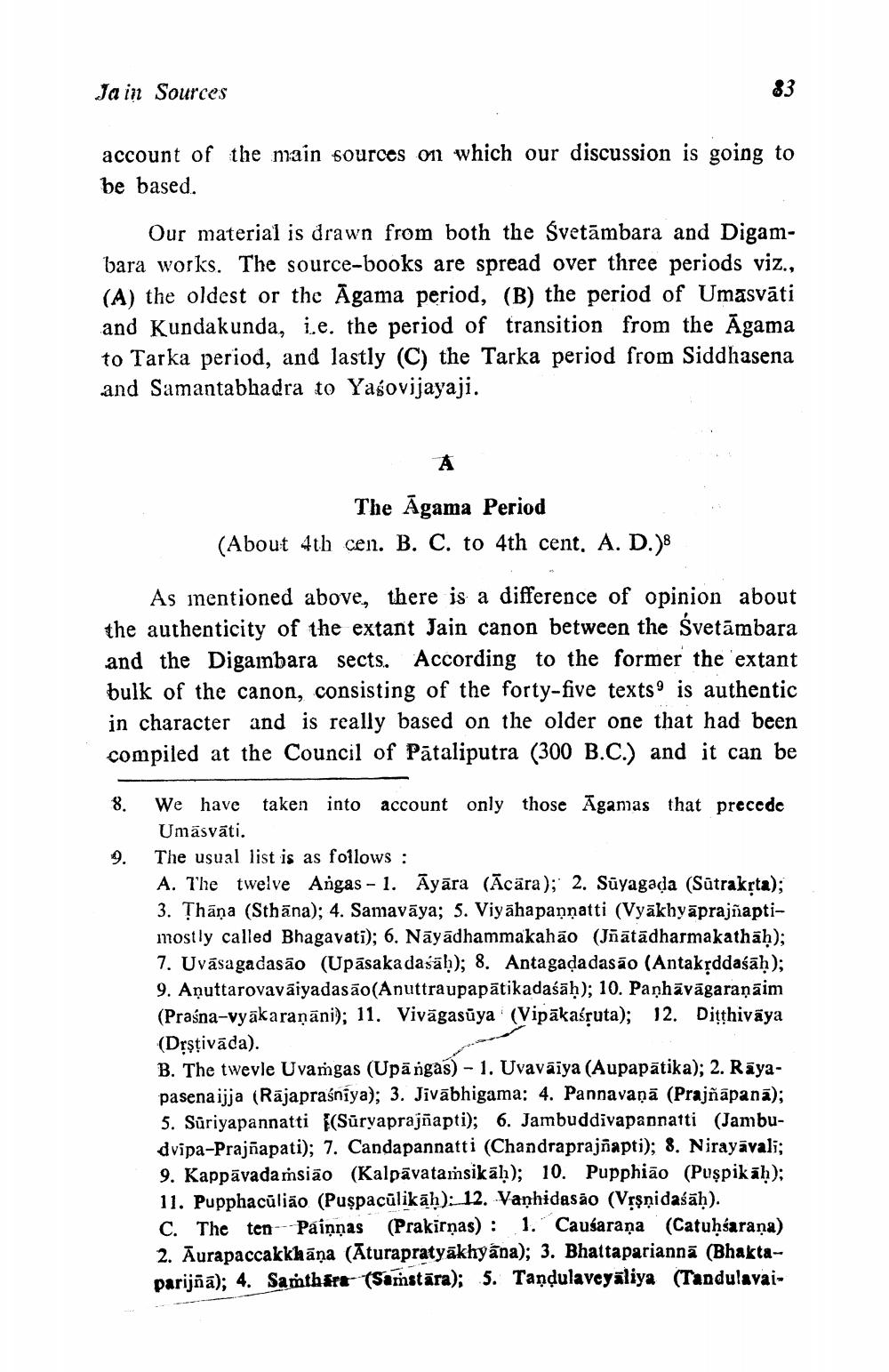________________
Ja in Sources
account of the main sources on which our discussion is going to be based.
83
Our material is drawn from both the Svetambara and Digambara works. The source-books are spread over three periods viz., (A) the oldest or the Agama period, (B) the period of Umasvāti and Kundakunda, i.e. the period of transition from the Agama to Tarka period, and lastly (C) the Tarka period from Siddhasena and Samantabhadra to Yagovijayaji.
A
The Agama Period
(About 4th cen. B. C. to 4th cent. A. D.)8
As mentioned above, there is a difference of opinion about the authenticity of the extant Jain canon between the Svetambara and the Digambara sects. According to the former the extant bulk of the canon, consisting of the forty-five texts is authentic in character and is really based on the older one that had been compiled at the Council of Pataliputra (300 B.C.) and it can be
9.
8. We have taken into account only those Agamas that precede Umäsvāti.
The usual list is as follows:
A. The twelve Angas - 1. Ayara (Acara); 2. Sūyagaḍa (Sūtrakṛta); 3. Thāņa (Sthāna); 4. Samavāya; 5. Viyahapanṇatti (Vyakhyāprajñaptimostly called Bhagavati); 6. Nāyādhammakahão (Jñātādharmakathāḥ); 7. Uvasagadasão (Upāsaka daśāḥ); 8. Antagaḍadasão (Antakṛddaśāḥ); 9. Aṇuttarovavaiyadasão (Anuttraupapātikadaśāḥ); 10. Paṇhāvāgaraṇāim (Praśna-vyakaraṇāni); 11. Vivägasūya (Vipākaśṛuta); 12. Ditthivaya (Dṛṣṭivāda).
B. The twevle Uvamgas (Upangas) - 1. Uvavāiya (Aupapātika); 2. Rāyapasenaijja (Rajapraśniya); 3. Jīvābhigama: 4. Pannavaṇā (Prajñāpanā); 5. Suriyapannatti (Suryaprajñapti); 6. Jambuddivapannatti (Jambudvipa-Prajñapati); 7. Candapannatti (Chandraprajñapti); 8. Nirayāvalī; 9. Kappavadaṁsião (Kalpavatamsikāḥ); 10. Pupphião (Puspikāḥ); 11. Pupphaculião (Puspaculikah): 12. Vanhidasão (Vṛṣṇidaśāḥ). C. The ten Painņas (Prakirņas) : 1. Causarana (Catuḥsarana) 2. Aurapaccakkhāṇa (Aturapratyakhyana); 3. Bhattaparianna (Bhaktaparijñā); 4. Samthara (Samstara); 5. Tanḍulaveyaliya (Tandulavai




